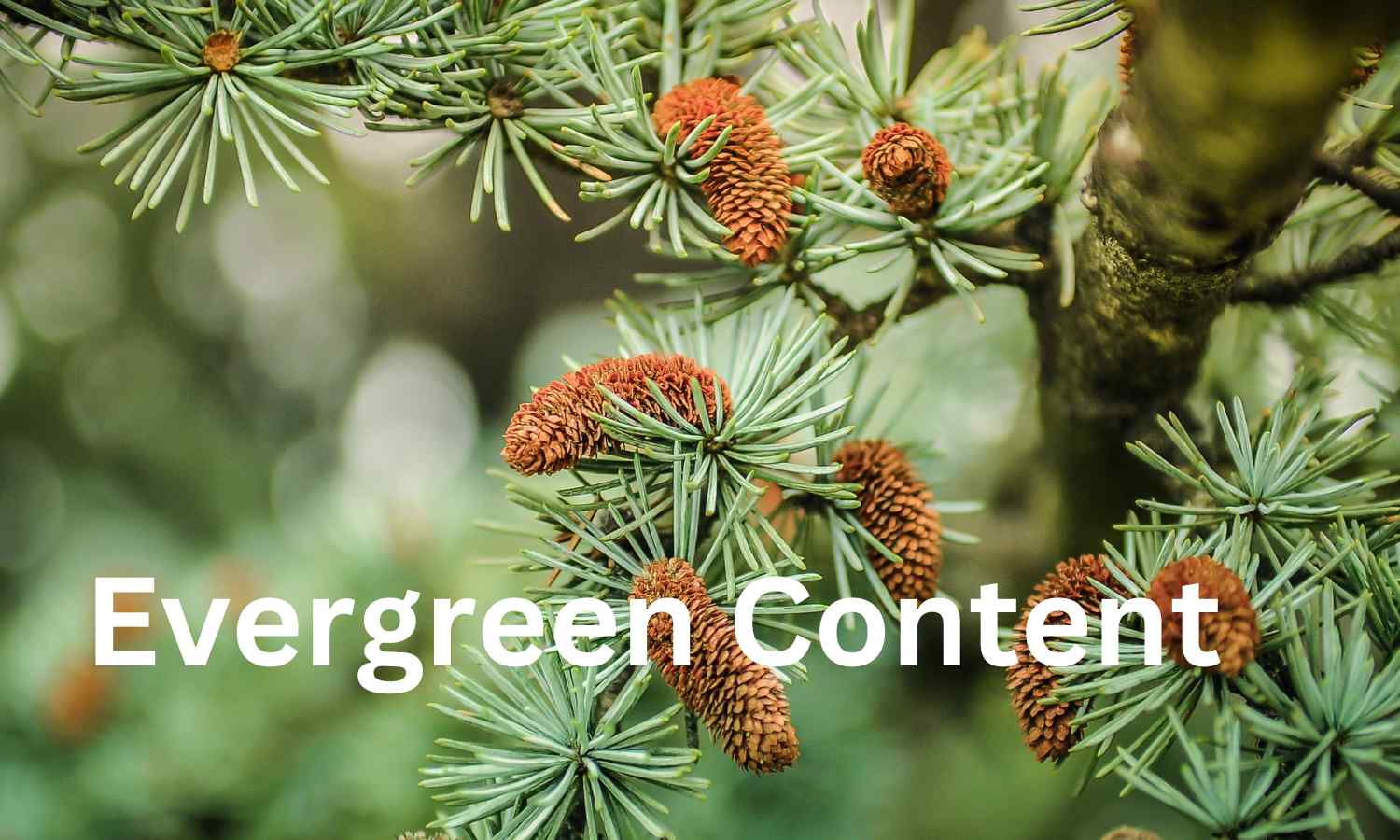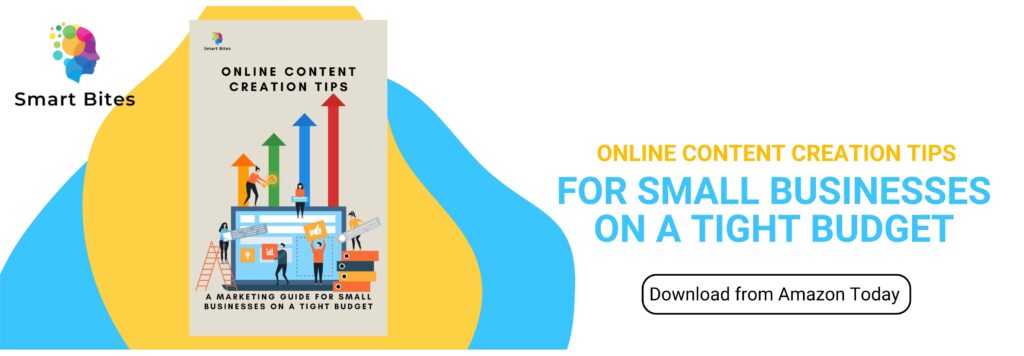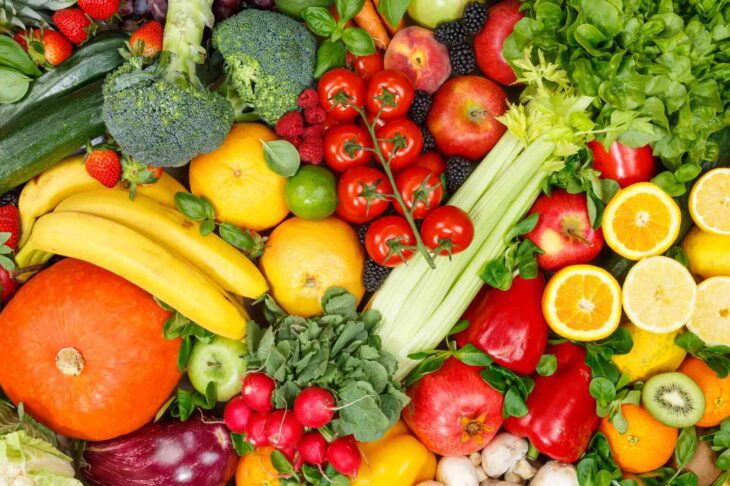
The Ultimate Guide to Evergreen Content and Its Value in Marketing
When it comes to digital marketing, staying ahead of the competition requires a strategic approach to content creation. One proven strategy is the use of evergreen content – timeless, informative, and valuable material that remains relevant and continues to engage readers over time.
But what exactly is evergreen content, and why should businesses prioritize it in their marketing strategy? Here’s we’ll dive deep into the concept, its value in marketing, and how to create and leverage it effectively.
- Much like the evergreen tree, it remains fresh and useful throughout the years.
- Unlike time-sensitive or trending topics, evergreen content focuses on subjects that maintain their relevance and continue to provide value to your target audience.
- The primary goal of this type of content is to build a strong foundation for your online presence and establish your brand as an authority in your niche.
By the end of this guide, you should be equipped with the knowledge and tools needed to effectively incorporate evergreen content into your marketing strategy.

The Evergreen Content Advantage
Incorporating evergreen or timeless content into your marketing strategy brings several benefits that can boost your online presence and help achieve long-term success. Here are the key advantages and why this type of content is essential in today’s competitive digital landscape.
Long-lasting relevance
Evergreen content revolves around subjects that maintain their relevance over time, regardless of current trends or industry news. By focusing on these solid topics, you create a resource library for your target audience that remains valuable for years to come. This long-lasting relevance not only helps to attract new visitors but also encourages repeat visits from those seeking reliable information on a particular subject.
Due to its enduring nature, it has the potential to generate consistent traffic to your website over an extended period. As more users discover your content through search engines, social media, or word of mouth, your website’s visibility increases, leading to a steady stream of organic traffic. This ongoing influx of visitors can help improve your overall website performance and conversion rates.
Boosts SEO performance
Timeless content provides an excellent opportunity to optimize your website for specific keywords related to your industry or niche. By conducting thorough keyword research and incorporating relevant terms into your content, you can improve your search engine rankings and increase the likelihood of attracting organic traffic. Over time, this consistent SEO performance can establish your website as a go-to resource for your target audience.
Search engines, particularly Google, favour high-quality content that provides value to users. Timeless content, by nature, is designed to be informative, engaging, and valuable. As it gains traction and attracts backlinks from other reputable websites, your search engine rankings should improve, making it easier for users to find your website when searching for relevant topics.



Establishes authority and credibility
Producing well-researched, in-depth content showcases your expertise in your industry and positions your brand as a thought leader. As more people rely on your content for accurate and valuable information, your credibility within your niche grows. Over time, this thought leadership can lead to increased brand awareness, customer trust, and higher conversion rates.
A strong library of timeless content helps to build and reinforce your brand identity. As users repeatedly encounter your high-quality content, they will begin to associate your brand with expertise and reliability. This brand recognition can result in increased loyalty from your existing customers and attract new ones who are seeking trustworthy sources of information.
Cost-effective marketing strategy
Evergreen content represents a cost-effective marketing investment due to its enduring relevance and ability to attract traffic over time. Unlike time-sensitive content, which may require constant updates or revisions, evergreen content continues to deliver results with minimal maintenance. This long-term performance allows you to allocate resources more efficiently and focus on other aspects of your marketing strategy.
While it’s crucial to keep your content fresh and up-to-date, evergreen content reduces the pressure of constantly producing new material. By building a foundation of evergreen content, you can focus on creating other types of content that complement your existing library or address current trends and news. This balanced approach can lead to a more sustainable and effective content marketing strategy.
Types of Evergreen Content
Creating a diverse mix of evergreen content is essential to keeping your audience engaged and catering to different preferences and needs. Here are five popular types of evergreen content that you can incorporate into your content strategy:
1. How-to guides and tutorials
How-to guides and tutorials are instructional pieces of content that provide step-by-step guidance on a specific task or process. These guides are highly valuable to users who are seeking practical solutions to their problems. By creating detailed, easy-to-follow tutorials, you can establish your brand as a helpful and reliable source of information.
Examples:
- How to Create a Budget for Your Small Business
- A Step-by-Step Guide to Loft Conversions
2. Listicles and resource compilations
Listicles are articles that present information in the form of a list, making the content easily digestible and engaging for readers. Resource compilations, on the other hand, are collections of tools, websites, or other resources that are relevant and useful to your target audience.
Both types of content can provide long-term value, especially if you focus on evergreen topics and update the lists with new information when necessary.
Examples:
- 10 Best Spices and Herbs for Budding Chefs
- Top 15 Free Tools for Graphic Designers
3. Case studies and success stories
Case studies are in-depth examinations of a particular project, campaign, or business endeavour that demonstrate real-world results and provide valuable insights. Success stories showcase the achievements of individuals or organizations in overcoming challenges or reaching specific goals.
Both case studies and success stories serve as evergreen content by offering practical lessons and inspiring readers to apply similar strategies in their own lives.
Examples:
- How Company XYZ Increased Revenue by 300% with Content Marketing
- The Inspiring Success Story of Entrepreneur Jane Doe
4. Frequently asked questions (FAQs)
FAQ pages are compilations of common questions and answers related to your product, service, or industry. They provide concise, straightforward information that addresses your audience’s most pressing concerns.
An FAQ page can be an invaluable evergreen resource that helps to establish trust, educate your audience, and reduce the need for repetitive customer inquiries.
Example:
- FAQ: Understand the Basics of Building an eCommerce Store
5. Ultimate guides and foundational content
Ultimate guides and foundational content are comprehensive, in-depth articles that cover a specific topic extensively. They serve as a one-stop resource for your audience, providing all the information they need to understand a concept or master a skill.
These pieces of content can be time-consuming to create, but their long-term value and ability to attract and engage readers make them a worthwhile investment.
Examples:
- The Ultimate Guide to Social Media Marketing for Small Businesses
- A Comprehensive Guide to Living Sustainably
Incorporating these different types of content into your marketing strategy will provide your audience with a wide range of valuable resources, catering to their diverse needs and preferences. This variety not only keeps your content library fresh and engaging but also strengthens your brand’s reputation as a reliable source of information in your industry.
Tips for Creating Evergreen Content
Creating high-quality content requires thoughtful planning, research, and execution. Here are some great tips to help you craft content that stands the test of time and resonates with your target audience:
Selecting the right topics
Before you begin creating evergreen content, it’s crucial to understand who your target audience is and what information they’re seeking. Conducting audience research, analysing customer data, and reviewing industry trends can help you identify the topics that will resonate most with your audience and provide long-term value.
Keyword research is an essential step in creating evergreen content that ranks well in search engines. Use keyword research tools like Google Keyword Planner or SEMrush to identify relevant, high-traffic keywords related to your industry. Incorporating these keywords into your evergreen content can boost your visibility and attract organic traffic.
Focus on quality and depth
Evergreen content should be thorough, well-researched, and accurate. Ensure that you’re covering all aspects of a topic, providing in-depth information that fully addresses your audience’s needs. Include reputable sources and expert insights to enhance your content’s credibility and trustworthiness.
Craft your evergreen content with your audience’s experience in mind. Use clear, concise language and format your content for easy readability with headings, subheadings, and bullet points. This user-friendly approach helps to make your content accessible and engaging for your audience.
Ensure evergreen content is up-to-date
Although it is designed to remain relevant over time, it’s essential to review and update your content periodically to ensure its continued accuracy and usefulness. Set a schedule for revisiting it and make necessary updates or revisions to keep it fresh and valuable.
Adding a “last updated” timestamp to your evergreen content signals to your audience that the information is current and reliable. This transparency can help to build trust and credibility with your readers.
Incorporate multimedia elements
Enhance your evergreen content by incorporating visual aids such as images, infographics, and videos. These multimedia elements can help to illustrate complex concepts, break up text-heavy content, and make your content more engaging and shareable.
Interactive elements, like quizzes and calculators, can add value and engagement to your evergreen content. By offering a personalized experience, these features can help to hold your audience’s attention and encourage them to explore your content further.



Promoting and Leveraging Evergreen Content
Creating evergreen content is just the beginning; promoting and leveraging it effectively is crucial for maximizing its potential. Here are four strategies to help you get the most out of your evergreen content:
Social media marketing
Social media platforms like Facebook, Twitter, LinkedIn, and Pinterest are excellent channels for promoting your evergreen content. Share your content regularly and consider using different captions, images, or post formats to keep your audience engaged and attract new followers.
Invite your audience to engage with your evergreen content by asking questions, requesting feedback, or encouraging them to share their own experiences. This interaction can help to build relationships, foster brand loyalty, and increase the visibility of your content.
Check out our post: Social Media Hashtags: How do I Pick the Right Ones for my Business?
Email marketing
Incorporate evergreen content into your email marketing campaigns by including it in your newsletters or creating dedicated email series around specific topics. This approach can help to drive traffic to your evergreen content, increase engagement, and demonstrate your expertise to your subscribers.
Create segmented email campaigns for new subscribers that introduce them to your most valuable evergreen content. This strategy can help to onboard new subscribers, showcase your expertise, and establish your brand as a reliable source of information.
Internal linking
Interlink your evergreen content with other relevant content on your website to create a seamless user experience and encourage exploration. Internal linking not only enhances website navigation but also helps to distribute link equity, improving your SEO performance.
Incorporate timeless content into your website’s navigation, such as featuring it on your homepage, creating a resources section, or including it in your blog’s sidebar. This visibility can help to drive traffic to your evergreen content and improve user engagement.
Repurposing evergreen content
Repurpose your content by converting it into different formats, such as turning a blog post into a video, podcast, or infographic. This approach helps to extend the reach of your content and appeal to different audience segments.
Revisit and refresh older content by updating information, adding new insights, or reformatting the content for a different platform. This strategy can help to re-engage your existing audience and attract new readers who may have missed the original piece.
Measuring the Success of Your Evergreen Content
To ensure your timeless content is delivering the desired results, it’s essential to measure its performance and make data-driven decisions for improvement. Here are four key metrics to track and analyse to assess the success of your evergreen content:
- Use tools like Google Analytics to monitor the organic traffic your evergreen content generates. High organic traffic indicates that your content is ranking well in search engines and attracting users who are searching for relevant information.
- Track your search engine rankings for target keywords to assess the effectiveness of your SEO efforts. Improved rankings indicate that your evergreen content is resonating with search engines and users alike.
- Examine metrics like time on page and bounce rate to understand how users interact with your evergreen content. High time on page and low bounce rates suggest that your content is engaging and providing value to your audience.
- Monitor the number of social shares and comments your content receives to gauge its impact on your audience. High levels of social engagement can signify that your content is resonating with readers and encouraging conversation.
- Track the conversion rate of your evergreen content, such as newsletter sign-ups, product purchases, or content downloads, to measure its impact on your marketing goals. A high conversion rate indicates that your evergreen content is effectively driving desired actions from your audience.
- Calculate the ROI of your evergreen content by comparing the costs associated with creating and promoting the content to the revenue or value generated from conversions. A positive ROI demonstrates that your content is a worthwhile investment for your marketing strategy.
- Assess the number and quality of backlinks your evergreen content receives to evaluate its authority and credibility. High-quality backlinks from reputable sources can improve your search engine rankings and increase your content’s visibility.
- Monitor the referral traffic generated by backlinks to your evergreen content. High referral traffic can indicate that your content is being recognized and shared by other industry experts, further validating its value and relevance.
By consistently tracking and analysing these metrics, you can assess the success of your evergreen content and make informed decisions to optimize your content strategy for long-term growth and success.



Summary
Evergreen content plays a crucial role in any successful content marketing strategy. Its timeless nature and long-lasting relevance make it a valuable asset that can drive consistent traffic, improve SEO performance, establish authority, and contribute to cost-effective marketing efforts.
By creating a diverse mix of evergreen content, such as how-to guides, listicles, case studies, and ultimate guides, you can cater to your audience’s varied needs and preferences. Focus on selecting the right topics, ensuring quality and depth, promoting your content effectively, and measuring its success to optimize your evergreen content strategy.

